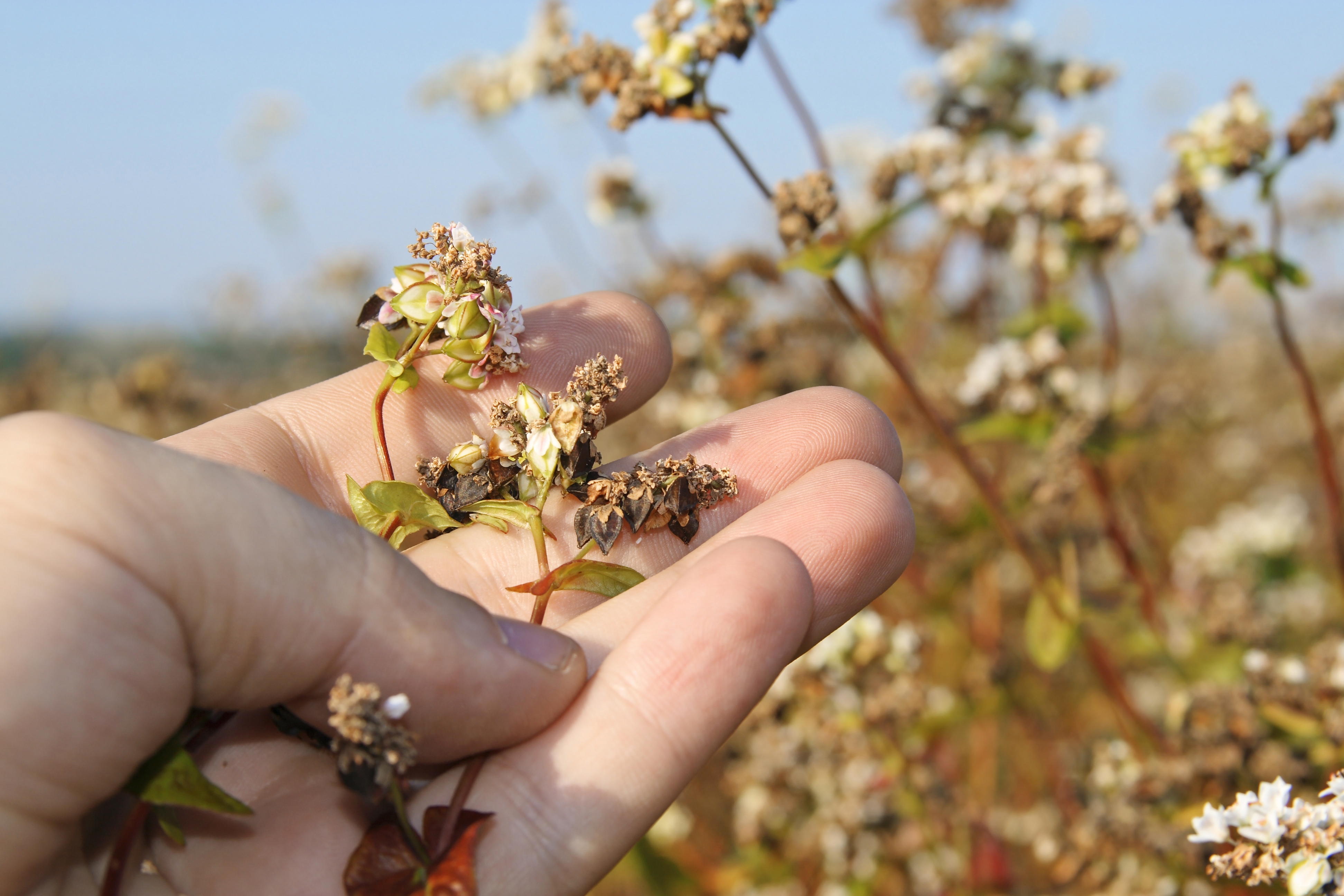Buckwheat
When we think of buckwheat, what comes to mind? Gluten free, ancient grain, nutty-taste, galette de Breton, soba noodles...it is those things and so much more.
Buckwheat seeds, or groats, look a little like triangles. They are mostly often brown but can be closer to a black colour too. The groats (hull removed) are lighter colour with a green tinge.

Growing
Interestingly, buckwheat is also grown for honey production. The honey turns out quite a dark colour and strong flavour.
History
Buckwheat likely originated in China, then brought to Europe, which was then brought to North America during colonization. It does well here because of its relatively shorter growth period.
It is called buckwheat because the grain of buckwheat was used in the same way as wheat. https://open.alberta.ca/publications/2551720. However unlike wheat, buckwheat is not technically a grass.
Ways To Cook
Buckwheat is handled and cooked like other grains. It is a great alternative for flour in some recipes where gluten is not a requirement for structure. Wheat flour can be bland in comparison. We use it in cooking similar to grains, like boiling barley or making a noodle out of the milled flour like wheat.
Boiled buckwheat groats are delicious in salads, grain pilafs, and hot breakfast cereals. They can also be toasted slightly as a crunchy topping (boil it first). Cooked buckwheat porridge is called kasha (from eastern Europe where buckwheat production is high).
Milled buckwheat flour looks grey with black specks. It can be made into a paste or a dough which is what the famous Japanese soba noodles are. Buckwheat flour can be substituted or partially substituted in baking for extra flavour. For example, pancakes, cookies and muffins.
Buckwheat is gluten free so be careful of cross-contamination if allergies are of concern.
Buckwheat Recipe Links
Some of our favourite videos
Alberta Buckwheat Producers
Grainworks Organic Tillers & Millers
About this producerOpen Alberta Publication - https://open.alberta.ca/publications/2551720
